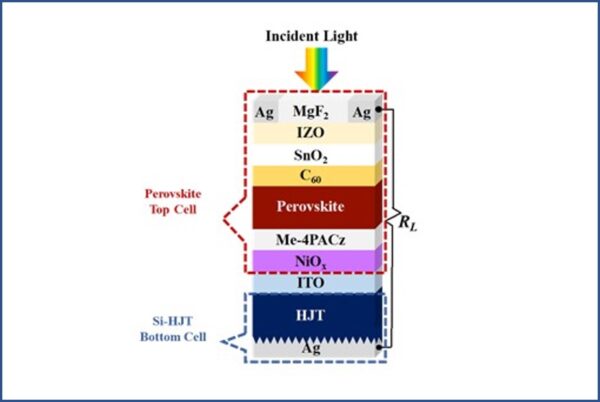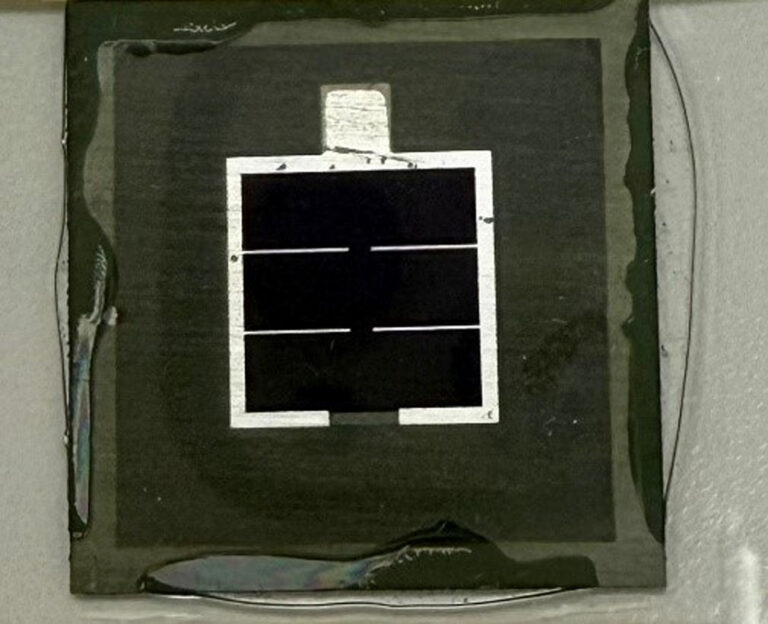Taiwan’s Academia Sinica has announced that a group of researchers has developed a two-terminal (2T) perovskite-silicon tandem solar cell with an energy conversion efficiency of 31.5%.
“In the future, the research team will further optimize the production process, increase the cell surface area, improve the stability of the stacked components and develop a production method that is more suitable for mass production,” the research institute said in a statement. “We have achieved high efficiency by reducing interface losses.”
The research group used an unspecified heterojunction (HJT) crystalline solar cell technology for the bottom device.

Image: Academia Sinica
Furthermore, a perovskite solar cell was used, built with a substrate made of indium tin oxide (ITO), a hole transport layer (HTL) made of nickel (II) oxide (NiOx) and called phosphonic acid methyl substmodified carbazole (Me-4PACz)a perovskite absorber, a buckminsterfullerene (C60) electron transport layer (ETL), a tin oxide (SnOx) buffer layer, a transparent back contact made of indium zinc oxide (IZO), a silver (Ag) metal contact, and a anti-reflective coating based on magnesium fluoride (MgF2).
“We will continue to work closely with domestic academic research institutions and manufacturers to work jointly develop this cell technology,” the research team said, without revealing more technical details about the new cell concept.
Researchers from Germany’s Fraunhofer Institute for Solar Energy Systems (Fraunhofer ISE) recently said that the The practical energy conversion efficiency potential of perovskite-silicon tandem solar cells can reach 39.5%. Researchers said exceeding this efficiency threshold will require a change in cell architecture, replacing buckminsterfullerene (C60) with a more transparent electron transport layer and finding more transparent alternatives to indium tin oxide (ITO) layers.
This content is copyrighted and may not be reused. If you would like to collaborate with us and reuse some of our content, please contact: editors@pv-magazine.com.
Popular content



